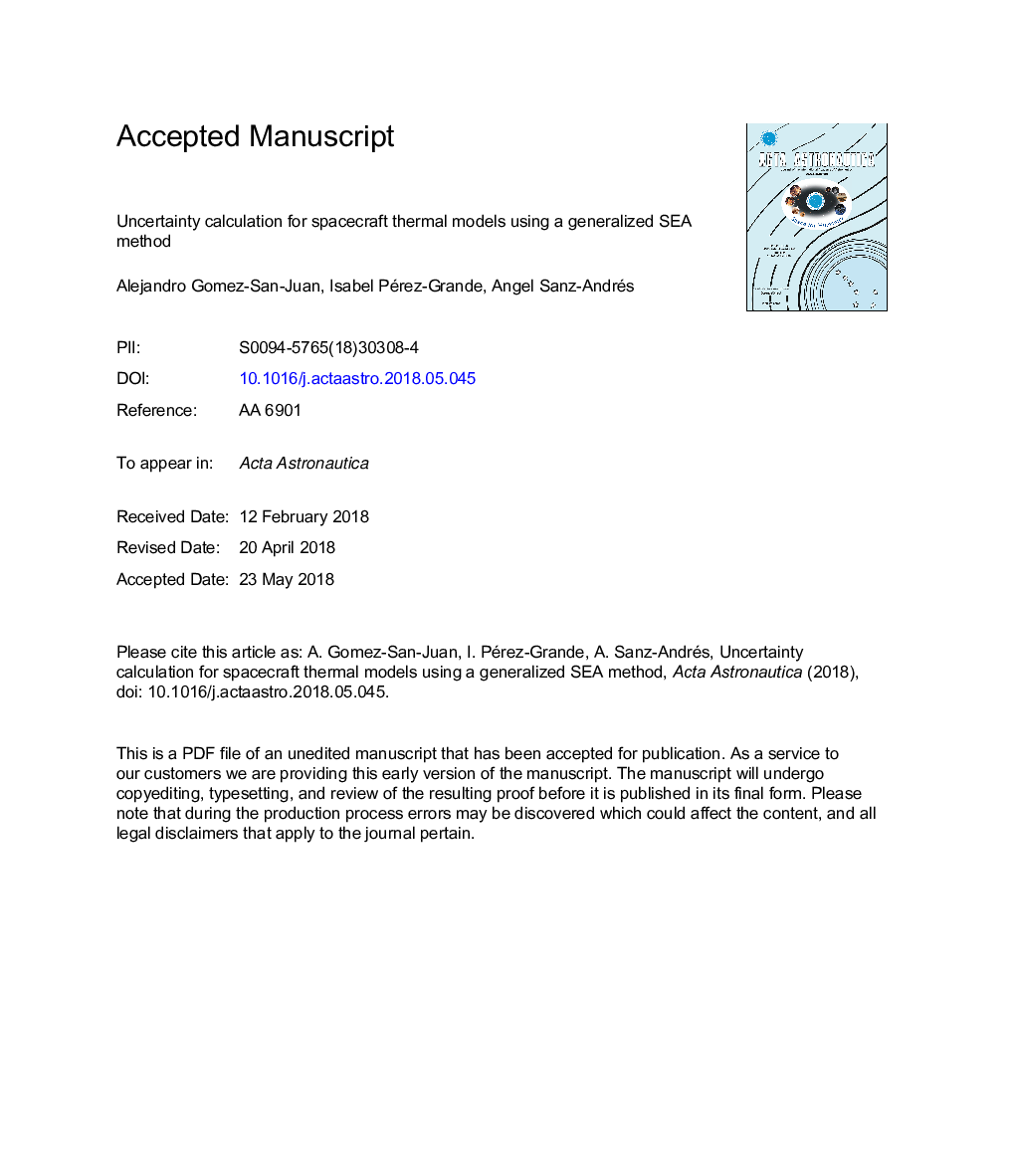| Article ID | Journal | Published Year | Pages | File Type |
|---|---|---|---|---|
| 8055443 | Acta Astronautica | 2018 | 40 Pages |
Abstract
Uncertainty calculation in spacecraft thermal control and design is generally performed using two methods: Statistical Error Analysis (SEA) and Monte Carlo Simulation (MCS). These two methods present differences both in accuracy and in time of execution. Both features are compared in this paper, and the sources of possible divergence between their results are identified. Having these sources of divergence in mind, a new methodology has been developed. In it, temperature uncertainty is obtained as a linear combination of the probability density functions including non-linear effects due to independent variation of each parameter. In order to compare the new method with the previous ones, all three have been applied to a practical case: the EPD-STEP particle detector onboard ESA's Solar Orbiter mission. In this example this new method is proved to be comparable to SEA in terms of computing time and to MCS in terms of accuracy.
Related Topics
Physical Sciences and Engineering
Engineering
Aerospace Engineering
Authors
Alejandro Gómez-San-Juan, Isabel Pérez-Grande, Angel Sanz-Andrés,
